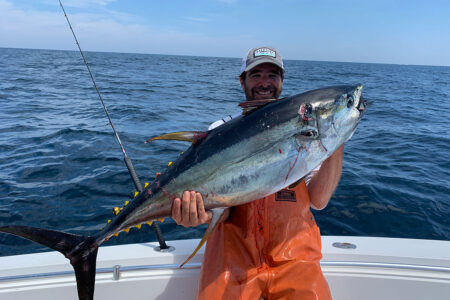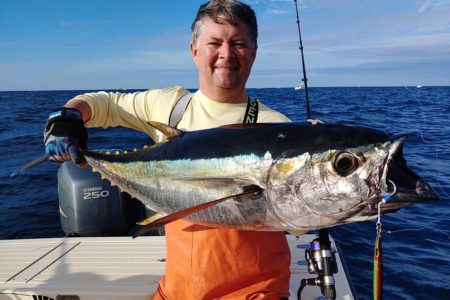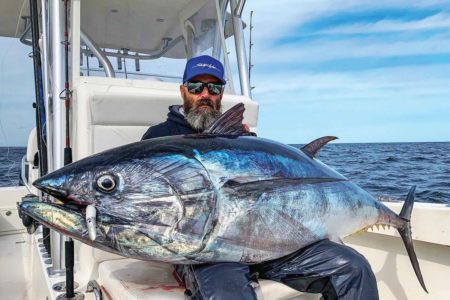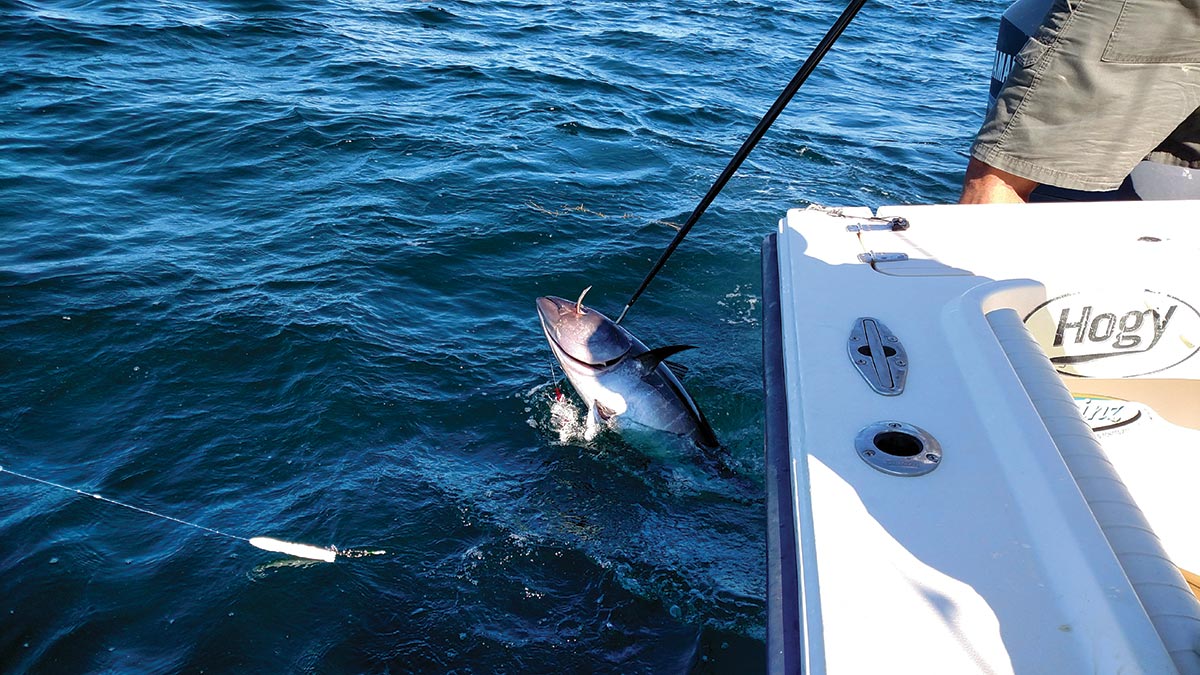
Hooking and fighting a tuna is the fun part, the real work begins when the fish is boat-side.
For those that have fought many tuna, we all know that those final moments when you have the tuna in your sights, and you have to finish the game, can be the most exhilarating part of the battle but also the most nerve racking. Time and experience on the rod usually work in your favor to seal the deal, and the tuna comes to the deck. But what about newbies or first-timers to this game when it is a completely new experience and they are at the finish line? This category encompasses the majority of the people I have on board for my tuna charters, and yes it is quite a thrill when they are able to finish the game and not have to pass the rod off!
Most of the tunas that I encounter off the coast on the summer mid-shore grounds are bluefin and yellowfin in the 40- to 80-pound class. This is a perfect size fish to be able to fight and land for a tuna junkie, but for first-timers with no knowledge of technique it can be a challenge. Fatigue can quickly set in, and when power and leverage is needed the most, especially when the tuna gets close to the boat, none might be there.
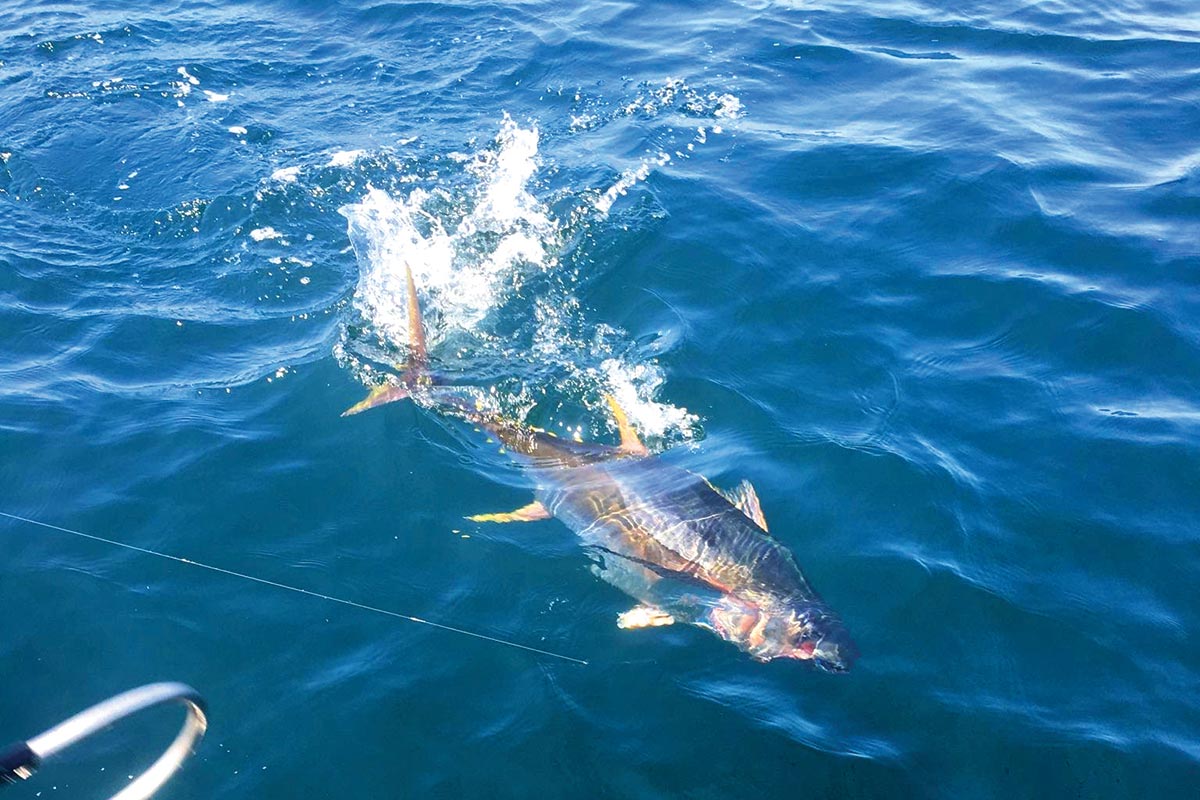
To help preserve stamina, my son Tommy coaches our clients through the entire fight with respect to reel cadence, how to short-stroke-lift and reel down, and when to just hold on and let the tuna do its thing. He will also shout out commands to me as to how to maneuver the boat or which way to turn if I have to chase the tuna. On a cabin boat you should fight your tuna with the boat downwind with the angler in the aft corner. I like to position my boat so Tommy and the angler are on the starboard aft side. I turn the wheel as necessary, sometimes even circling, to keep the tuna in this position so it doesn’t run under the boat or have the boat drift over it. On a center console one has the advantage to just walk the tuna all around the boat when fighting, but it is still best to bring the tuna to the rear to stick with the gaff. This will put you closest to the water away from the additional bow height and rails.
Once deep color is spotted, the tuna will most likely be straight up and down doing death spirals. Here is when coaching is most important as the tuna will circle and disappear under the boat and then come out. Tommy tells the client to reach down and out over the gunnel with the rod as the tuna disappears under the boat. When the tuna comes out he instructs the angler to wait until the tuna starts to turn back towards the boat on the top half of the circle, then it is lift and pull on the rod with quick, short strokes. This gains head control on the tuna lifting and pulling it up inch by inch and closer to the surface. This process is repeated for each circle the tuna makes. Many times, however, the tuna will sound and an already exhausted angler will have to start the process all over again. These soundings can do many clients in and is when I often have to tell the angler to pass the rod off if I see they are physically exhausted.
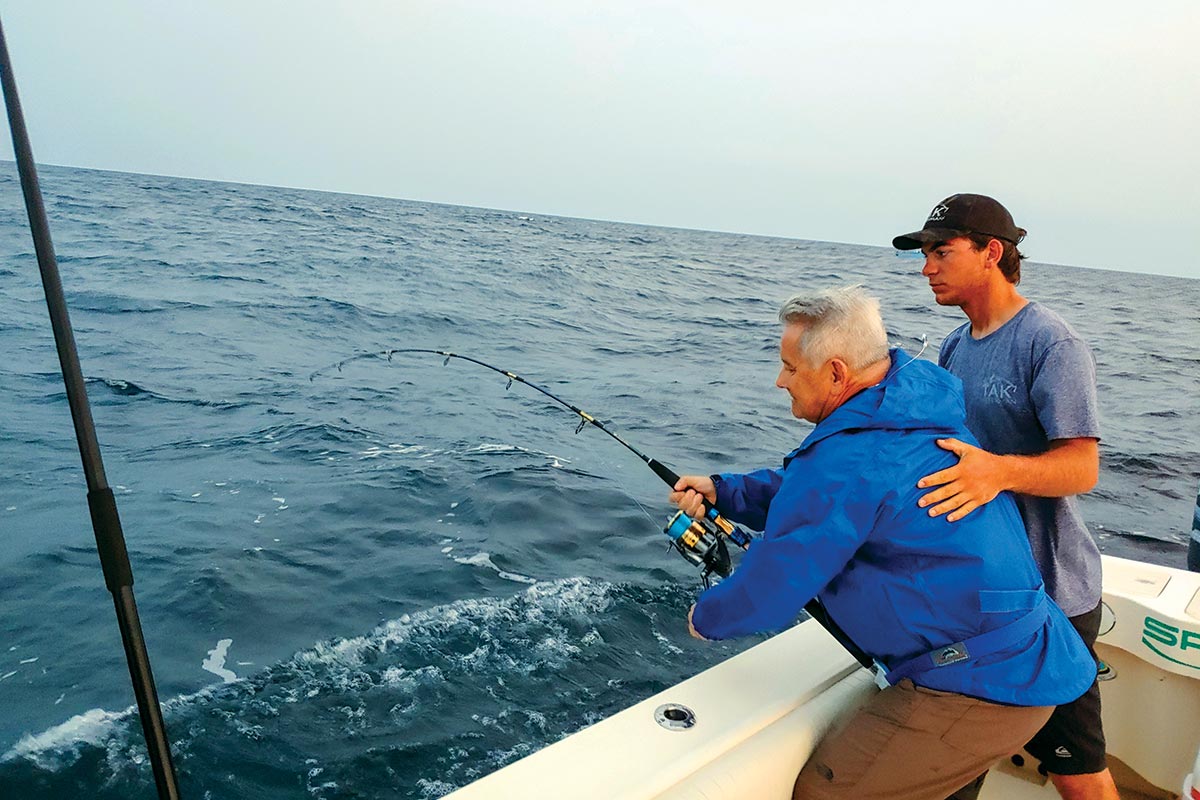
As deep color becomes color close to the surface, the most critical part of the fight commences. Ideally the angler puts enough pressure on the tuna to have its head break the surface and be able to lift, reel down, and short-stroke the tuna close enough to the boat to be reached with the gaff. The only person talking to the angler at this point should be the person with the gaff in their hand. On my boat, Tommy tells the angler when to lift, pull, reel down or let it go one more time around before he puts a gaff shot into the far side of the head. Anyone else yelling commands at the angler at this point will only be confusing and could result in the angler doing the wrong thing. We then call for a second gaff if needed, so make sure you always have a second one on the boat especially for those tuna that can be in excess of 80 pounds.
I also recommend carrying a harpoon on board because I like to see every angler fight a fish by himself to the end, and that means until it’s on the deck. Many times clients will be struggling with a tuna during the end game when it is just out of reach to stick with the gaff. Rather than take a chance of losing the tuna or having to pass the rod off, I will have Tommy grab our 10-foot harpoon and reach out and poke the tuna with the dart or throw it a few feet to end the game. Sticking it this way means success for the angler. I have had tunas break off when just out of reach of the gaff as they turn on their sides and vigorously start beating their tails and swim away from the boat in a last ditch effort for survival. This often happens when using light leaders to get a bite and extra pressure cannot be applied. If a break-off happens it can be disheartening for all, but especially for the angler that had the tuna in their sights and maybe in their mind that it was already game over.
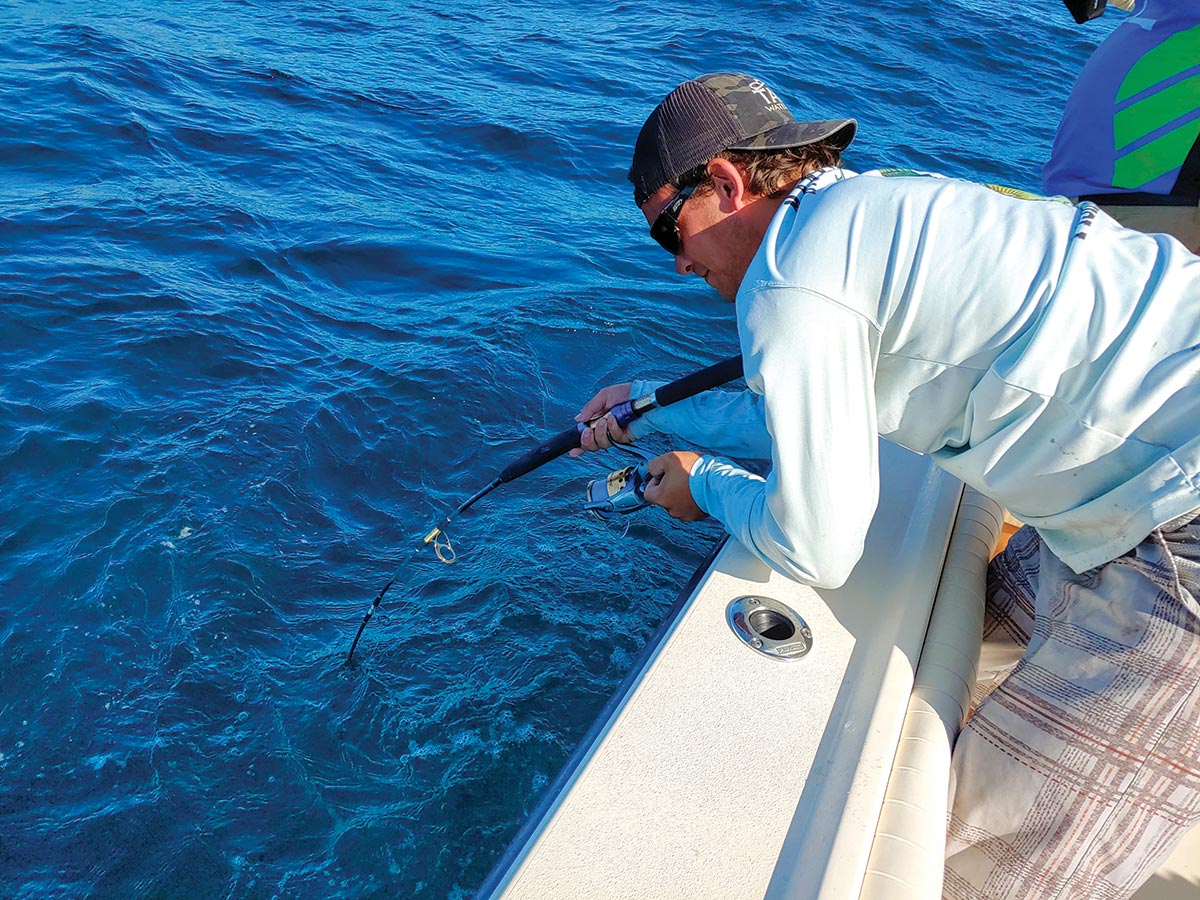
One more consideration for handling a tuna boatside is when you’ve reached your retention limit for the boat and the fish must be released. Federal Regulation 50 CFR 635.21(a) (1) states, “An Atlantic highly migratory species that is not retained must be released in a manner that will ensure maximum probability of survival, but without removing the fish from the water.” Quite often this is easier said than done as first the tuna needs to be subdued enough to be brought boat side. You then need to reach over the gunnel and pop the hook out. If you need to take a length measurement, then you need to lip gaff the tuna and have a measuring device rigged and ready so the fish can be measured in the water. I use a bluefin tuna release ruler that has very large font size numbers on it that makes it very easy to read when we reach down and stretch it from tip of the upper jaw to the fork of the tail. If you are tagging bluefin for the Atlantic Tuna Project like we do on my boat, use it for this as well.
